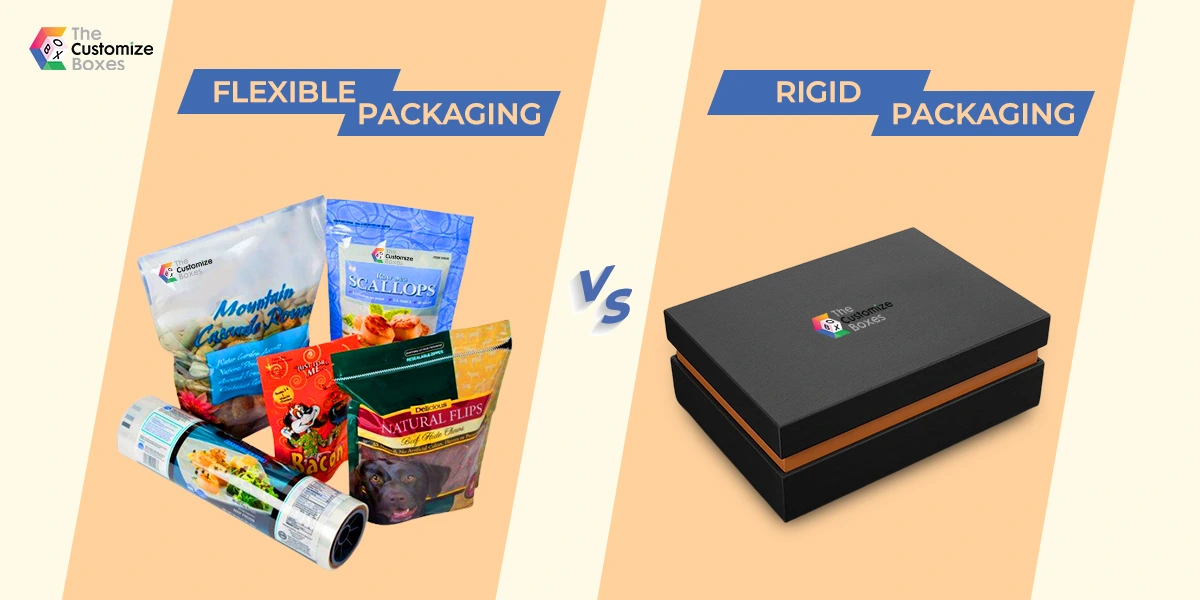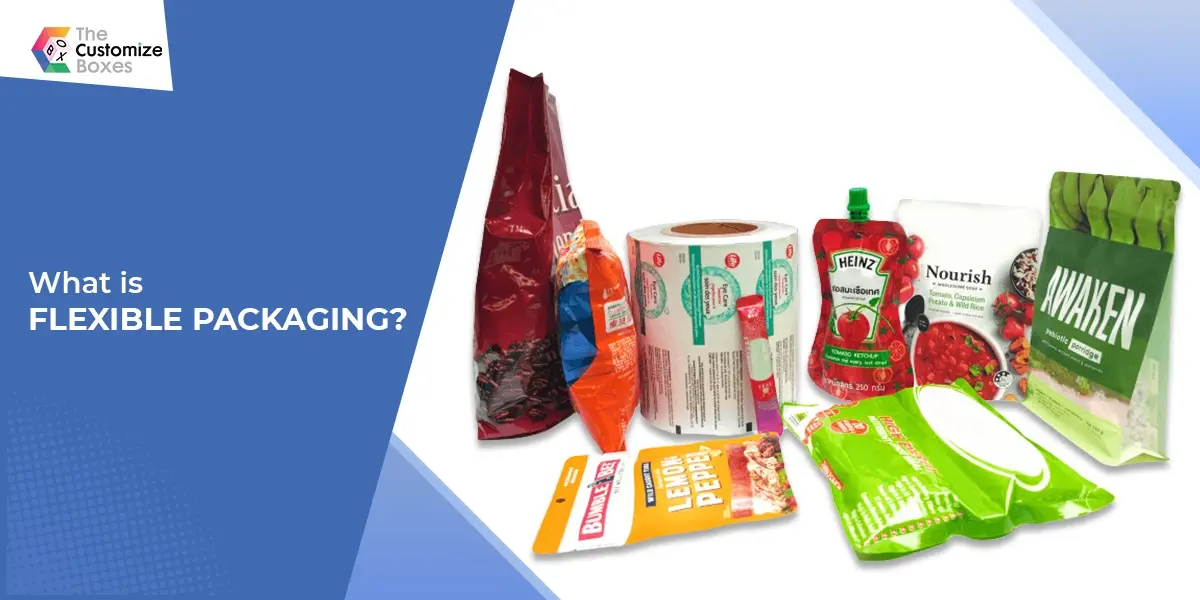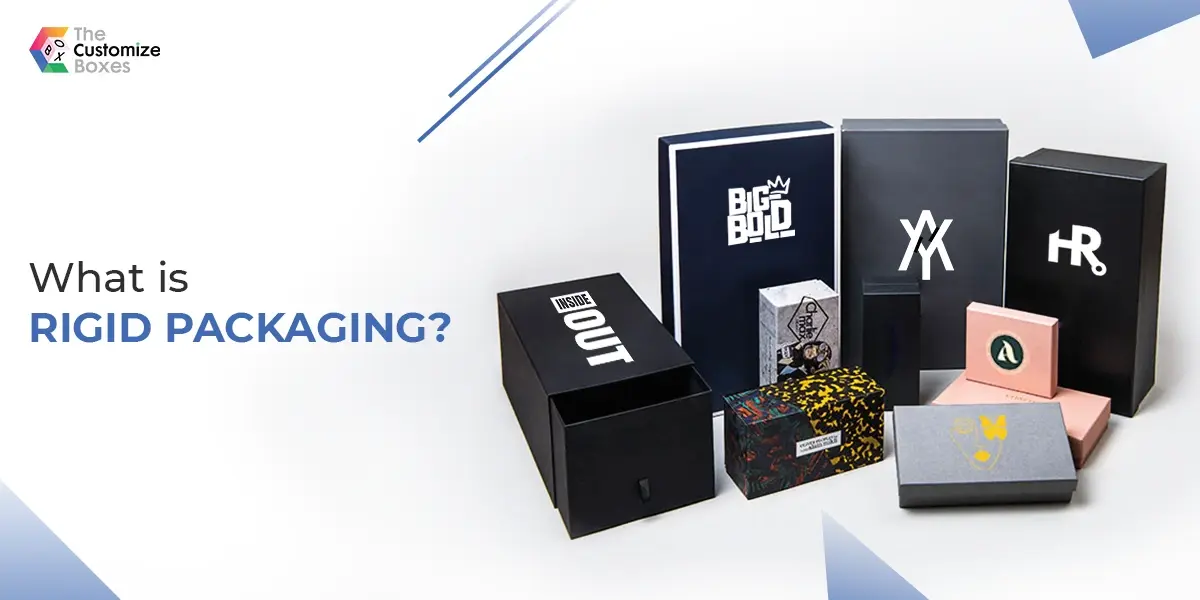
Flexible Packaging Vs Rigid Packaging - A Comparison Guide
The demand curve shifts its position to incline or decline when consumer perception changes. Business owners look toward any options when it comes to meeting consumer expectations. Both packaging has benefits depending on the product needs.
After learning their applications you can make wise decisions for your products and can grow sales. Are you looking for fascinating product packaging that can resonate with consumer preferences? But How!
Read this blog and learn the difference between these packaging and choose wisely for your product to make your brand stand out.
What is Flexible Packaging?

Flexible packaging refers to creating product solutions with non-rigid material. These packaging are growing and gaining more traction due to their high efficiency. They are capable of bending and are made of pliable packaging material to create bags, pouches, and sachets.
Business owners like these packages over rigid packaging due to their various features like lightweight, versatility, reduced carbon footprints, extended shelf life, and cost-effectiveness. The material used for flexible packaging contains barrier properties to protect products from external factors. Food can stall when it interacts with oxygen, and the plastic film used to create bags can extend your product's shelf life.
Flexible Packaging For Pros And Cons
Pros |
Cons |
|
Eco-friendly |
It can impact food taste. |
|
Easy to use |
Less resistant to temperature |
|
Cost Effective |
Landfills |
|
Less susceptible to dents |
It can be a broken or damaged product when it drops from the shelves |
|
compact protection |
Single-use- no re-sealing |
What is Rigid Packaging?

Rigid packaging refers to using sturdy and non-bendable materials for creating product boxes. Many industries use traditional rigid packaging solutions for product storage. Below in the table, the rigid packaging materials define the significant importance of product protection. They can maintain product integrity without shifting their look and shape.
Imagine, dropping your product in flexible packaging, what happens then? The product could be damaged or broken. So what would be more sturdy and durable than rigid packaging to keep your product safe from sudden drops or hits? With the property of impact resistance, they are a preferable choice for many business owners.
Rigid Packaging For Pros And Cons
Pros |
Cons |
|
Superior Strength |
Expensive |
|
Not impact the food taste |
More Material Waste |
|
Sustainability |
Stacking difficulties |
|
Luxury finish |
Requires more space |
Packaging Material for Rigid Vs Flexible
From the packaging material, get the difference between its properties and product suitability to decide better for your business. Below is the comprehensive table of these packaging material differences for understand better:
|
Packaging Material |
Advantages |
Best For Which Product |
|
|
Rigid Packaging |
Glass or Jar |
|
|
|
Plastic Boxes |
|
|
|
|
Cardboard Boxes |
|
|
|
|
Rigid Boxes |
|
|
|
|
Flexible Packaging |
Kraft paper |
|
|
|
Plastic bags |
|
|
|
|
Polyester film |
|
|
|
|
aluminum foil |
|
|
Table: Material Comparison between Rigid and Flexible Packaging
Difference between Flexible and Rigid Packaging
The first thing that customers notice when it comes to buying your product is the packaging. Create packaging that captivates your customers and impacts their buying decisions. Choose from the following flexible and rigid packaging to find the perfect material for making your product stand out.
Do not underestimate the brainstorming for your product packaging to impress your targeted customers. Also, read between the lines to understand the critical aspect of making your product packaging decision when it comes to launching. You can grow your business by just improving your packaging that matches your product contours.
For example, biscuits can be packed in both packaging but it can depend on the consistency and type. It means when you want a cost-effective solution, get flexible packaging, and if you want to make your brand a symbol of elegance, choose rigid packaging.
Here are the various aspects from which you can differentiate these two packaging types better:
-
Durability
Both packaging has its benefits and drawbacks, depending on how you are going to use it. Rigid boxes provide better product protection and structure to maintain their integrity. They are durable and strong to keep the items safe from damage.
In contrast, there is flexible packaging that can be shatterproof, but it can tear or puncture with sharp objects during shipping. These bags have barrier properties that keep the product inside safe from external factors and extend its shelf life.
-
Trend
About 71% of the respondents address the inclination of flexible packaging solutions over rigid. This indicates the importance of flexible packaging usage for food products due to hygiene and preservation. When considering flexible packaging, keep in mind the overall performance and sustainability. You can use the trendy bioplastic as a great alternative to plastic.
The rigid packaging market is growing at 6.62% CAGR due to its versatility. They are sturdy and durable to protect your product. Many industries like candles, cosmetics, jewelry, and more utilize these superiors' strength packaging to withstand damage.
-
Environmental Impact
Both flexible and rigid packaging have an environmental impact based on their types of material. Some of them are super biodegradable and eco-friendly that reduces carbon footprints and ecological issues. You can load more flexible pouches in single shipping, make fewer runs and use less gas to reduce environmental impact.
In contrast, rigid packaging has fewer materials which are super sustainable with durability. These containers are recyclable and reusable which creates fewer landfills.
Conclusion
Packaging is the first thing that consumers consider before making a purchasing decision. Many consumers prefer flexible and lightweight packaging solutions for easy and convenient opening. Whereas, some considered rigid packaging due to its reusability. If you have any questions regarding both packaging, contact us and we'll respond ASAP!
